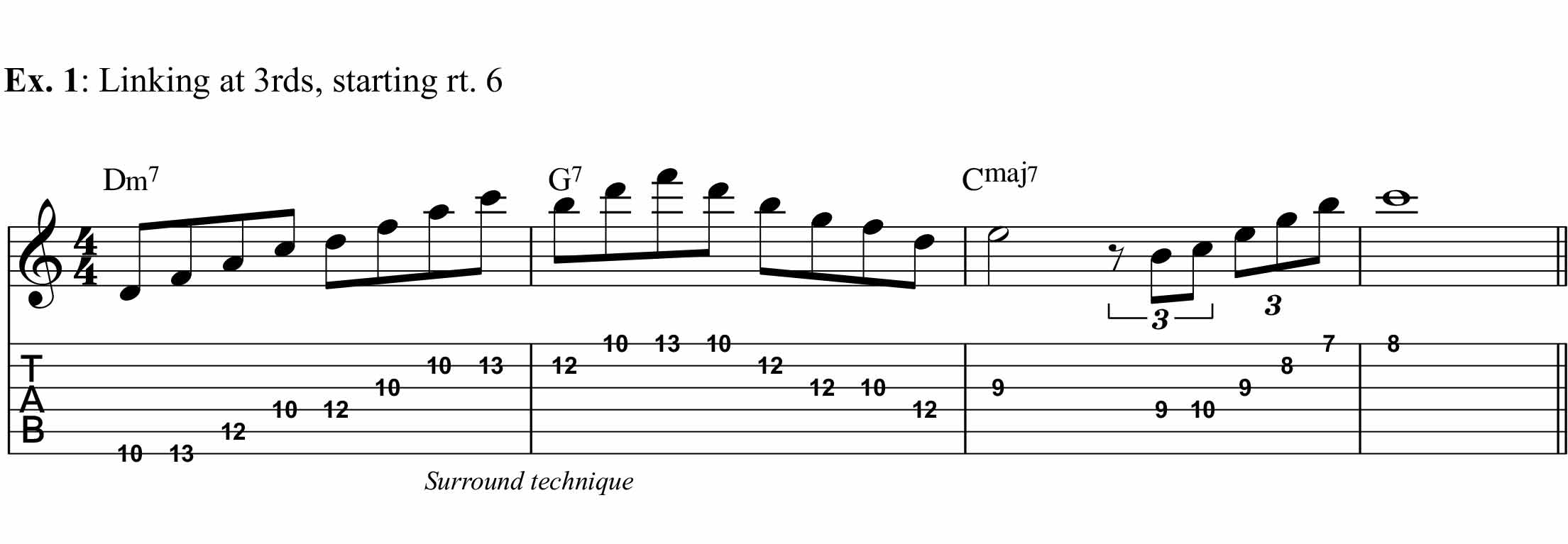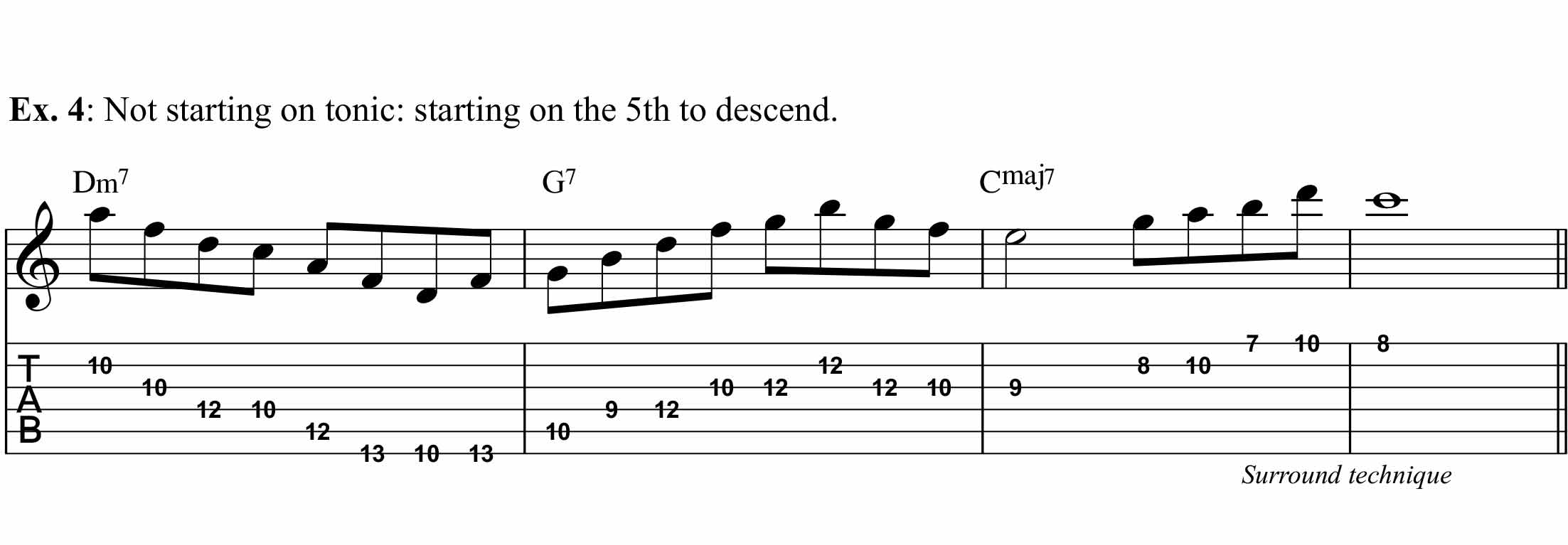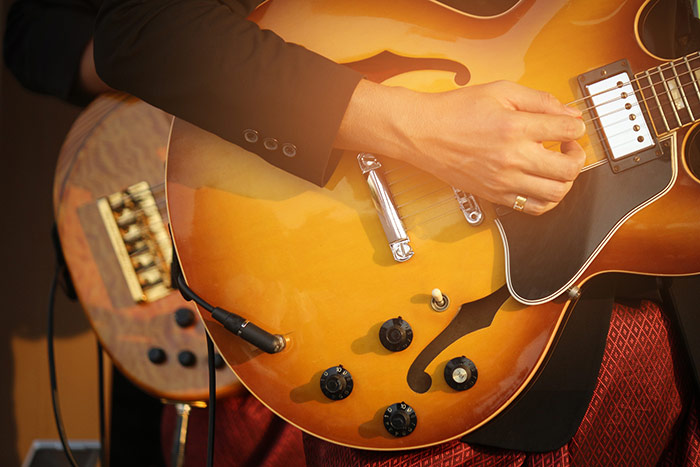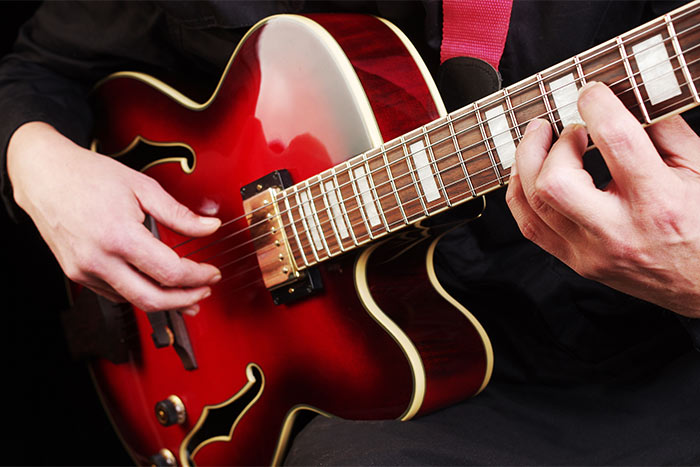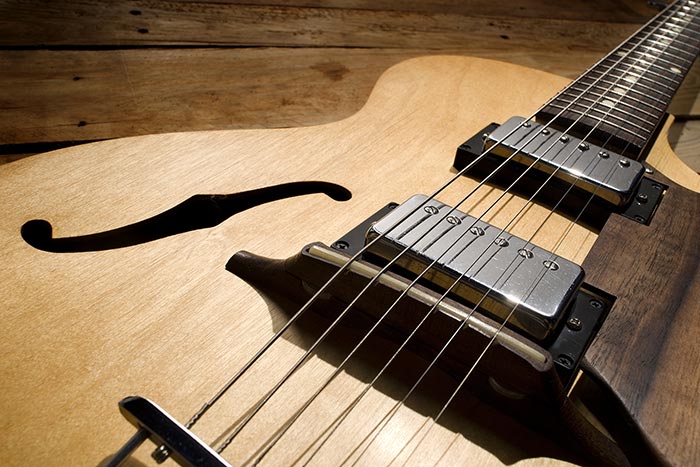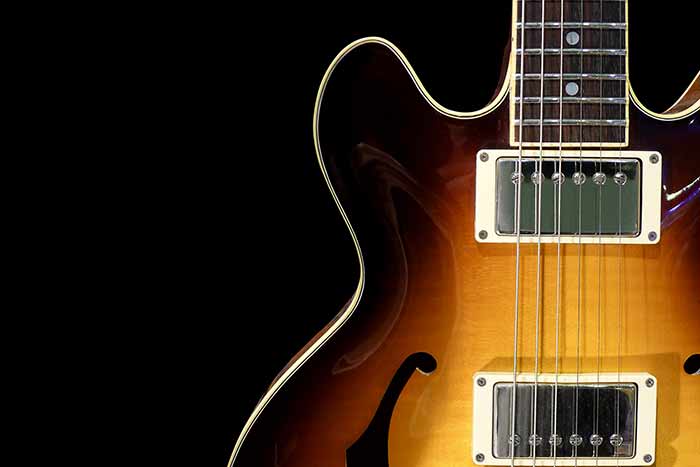The term “ii V I” (two, five, one) refers to a chord progression often used in many styles of music, especially in jazz. The numbers refer to the chords in the key that you are playing this chord progression, meaning the ii is the chord off of the second note of the scale, the V is the chord off of the fifth note, and the I is the chord off of the first note of the scale.
The roman numerals tell us if the chord is major or minor, lower case representing a minor chord and upper case showing major. This will also fall into the diatonic harmony for the key that you are in. For example, let’s take a look at a ii V I progression in the key of C major. The second note in the C major scale is a D note, meaning the chord off of D is our ii chord. The ii chord is always a minor chord in the standard diatonic harmony, meaning this will be a D minor, or D minor 7th chord. The 5th note in the key of C is a G, and the 5th chord in the diatonic harmony is a major triad, or if we add in the 7ths is a dominant 7th chord. Usually for a ii V I progression we will add in the 7ths to the chords to give them a little more colour and more notes in the chords to target. And of course, our I chord is a C chord, and being that it is the I, we can make this a C major 7th chord. So a ii V I progression in the key of C major is: D minor 7, G dominant 7, and C major 7.
What is an arpeggio?
Ok so now that we understand what a “ii V I” is, we should talk about what an arpeggio is. Arpeggios are a crucial part of soloing over not only ii V I’s, but chord changes in general. Arpeggio-based solos are a key element in the jazz genre and make up a big part of the sound. Put simply, an arpeggio is when you break up the notes of a chord and play them one note at a time. So for our ii V I in the key of C major (Dm7 – G7 – Cma7), we would need to break up the notes that create each of these chords to play the arpeggios that belong to each chord. A triad is the simplest form of a chord and is created by playing the 1, 3 and 5 of a scale together. So to create a C major triad, you would play the first note (C), the 3rd note (E) and the 5th note (G) of the C major scale together.
To turn these into 7th chords as we will often use in jazz and for our ii V I progressions, you will then add the 7th degree on top. To turn the C major triad into a C major 7th chord, you would just add the 7th degree to the triad, which is a B note. So a C major 7th chord would be the notes C – E – G – B played together at the same time, or to play a C major 7th arpeggio you would play these notes separately.
The formula for a major 7th arpeggio/chord is taking the 1 – 3 – 5 – 7 from the major scale off of the tonic of your chord, as explained above.
However, for a dominant 7th chord, you will need to flatten the 7th degree to make it a dominant chord. So for our G chord, take the notes 1 – 3 – 5 – b7 from the G major scale:
1 (G) – 3 (B) – 5 (D) – b7 (F). Usually in the key of G, the 7th degree would be an F#, but since we want a G dominant chord, this becomes an F natural.
To create a minor 7th chord, we follow the formula: 1 – b3 – 5 – b7. So to create a D minor 7th chord/arpeggio, we apply this formula to our notes from the D major scale:
1 (D) – b3 (F) – 5 (A) – b7 (C).
Notice how all the notes from Cma7, G7 and Dm7 all contain no accidentals (sharp or flat notes)?
This is because in the key of C major we have no accidentals, and since all of these chords are diatonic to the key, all notes from all three chords are built up of notes from the C major scale.
Before continuing on to try some ii V I licks, I would recommend going through a few different arpeggios for major 7, minor 7 and dominant 7, in different positions on the neck.
I would also recommend going through this with your tutor as they can advise on some good positions to start with. It is crucial that you are comfortable with these different shapes before beginning to play ii V I licks, as this will require you to change between the shapes quickly as the chords change.
What is a ii V I lick?
So now that we understand the concept of arpeggios and how to build them off of our chords, we can now look at using them to create and understand ii V I licks. A “ii V I lick” is a phrase played on your instrument that follows the ii V I progression, using the arpeggios as a starting point to follow the flow of the progression. By using the arpeggios, we are targeting all of the important notes of each chord as it passes, as the 1 – 3 – 5 – 7 are the important notes that make up the notes of our chords. In particular, the root and 3rds of the chords make great target notes for our ii V I licks, as they really define the sound of the chord.
Although the below examples will use mainly notes from our arpeggios, they will not be exclusive to the notes in the arpeggios. We can add in different chromatic notes to create tension or other notes from the scale to create a different sound and texture. More on this below.
II V I Licks for you to try:
II V I Lick 1
Lick 1: Lick 1 uses notes exclusively from the arpeggios of each chord, and will link arpeggios at the 3rd. This is a common technique when playing over ii V I progressions, as the 3rd is a very strong note in the chord that will define the sound and quality, making it a good target note. The lick ascends through a Dm7 arpeggio, to then link to the 3rd of the G7 chord (B), to then ascend through the G7 arpeggio, to then link to the 3rd of the Cma7 chord, finishing up with a run through the Cma7 arpeggio.
Please note: “starting rt 6” means you start with the root note on the 6th string of the guitar (low E string) if playing this lick on guitar. This same lick could be played in a different position, and would make a good exercise to do so!
II V I Lick 2
Lick. 2: Our second lick follows a similar approach, linking at the 3rds of the chords. This time we start on the 5th string on the guitar (A string) so we are in a different position on the neck. We ascend through a Dm7 arpeggio, to then link to the G7 at the 3rd of the chord again (B), to then descending down the G7 arpeggio. There is one non-arpeggio note in the G7 bar, that note being the fifth fret on the G string (a C note) which is the 4th of the chord. This addition gives a slightly different texture to the lick. We then link up at the 3rd of the Cma7 chord at the E note, to then finish up the lick playing up the Cma7 arpeggio.
II V I Lick 3
Lick 3: Lick 3 uses chromaticism to create some tension in our ii V I lick. By adding some notes directly above and below the existing notes in the arpeggio, these tight intervals create tension which then resolves nicely by landing on a strong chord tone. We ascend up the Dm7 arpeggio to then chromatically approach the tonic of the G7 chord from above, to then travel down the G7 arpeggio, to then use what is called surround technique to chromatically approach the tonic of the Cma7 chord. Surround technique is where you approach a target note from above and then below (or visa versa), to surround the note before playing it. This can be done with chromatics as seen in this example, or simply by surrounding the target notes with other notes in the scale or arpeggio.
II V I Lick 4
Lick 4: We don’t always have to start on the tonic of the ii chord in the progression, and doing this all the time can result in our licks sounding similar and predictable.
For example in Lick 4 we will be starting on the 5th of the Dm7 arpeggio (A), to then descend down the arpeggio, to play through the G7 arpeggio firstly ascending to then descend at the end to target the 3rd of the Cma7 arpeggio (E). The lick at the end of the Cma7 chord bar also uses the surround technique as discussed in Ex. 3, although this time we use notes from the C major scale to surround our target note. The last three notes are the 7th, the 9th, and then our target note which is the tonic. We use the surround technique by playing below the tonic, then above, then hitting our target note.
Minor ii V i’s
We don’t just use ii V I progressions only in major keys. This can also be in a minor key, and would give us a minor 7 flat 5 two chord (ii), and dominant or altered five chord (V), and a minor seventh i chord. For minor ii V i’s, we write the i in lower case since it is a minor chord.
The two chord (ii) is a minor seven flat 5 chord, and the formula for this chord/arpeggio is: 1 – b3 – b5 – b7, which will sound a little darker than the regular minor 7th.
We will keep the five (V) chord to a regular dominant 7th chord for this example but can be played as an altered 7th chord.
The one (i) chord is a minor seventh chord.
Minor II V I Lick 5:
We start example number five by ascending through the Dm7b5 arpeggio, before linking to the G7 chord at the 3rd as seen in previous examples. We then descend down the G7 chord before using our surround technique to target the 3rd of the Cm7 chord in bar 3. To finish off the lick we don’t only use notes from the Cm7 arpeggio, but we actually use C Harmonic Minor Scale to create some tension on the raised seventh of the scale to then resolve at the tonic. The harmonic minor scale is created by taking the Natural Minor or Aeolian mode and raising the seventh note to a natural seventh, resulting in a semitone interval between the seven and tonic. This semitone interval creates tension before resolving nicely, and is commonly used over a minor ii V i progression and other minor progressions for a different flavour. The exotic sound of this scale is also a good way to spice up your minor chord vamps to create some different textures.

